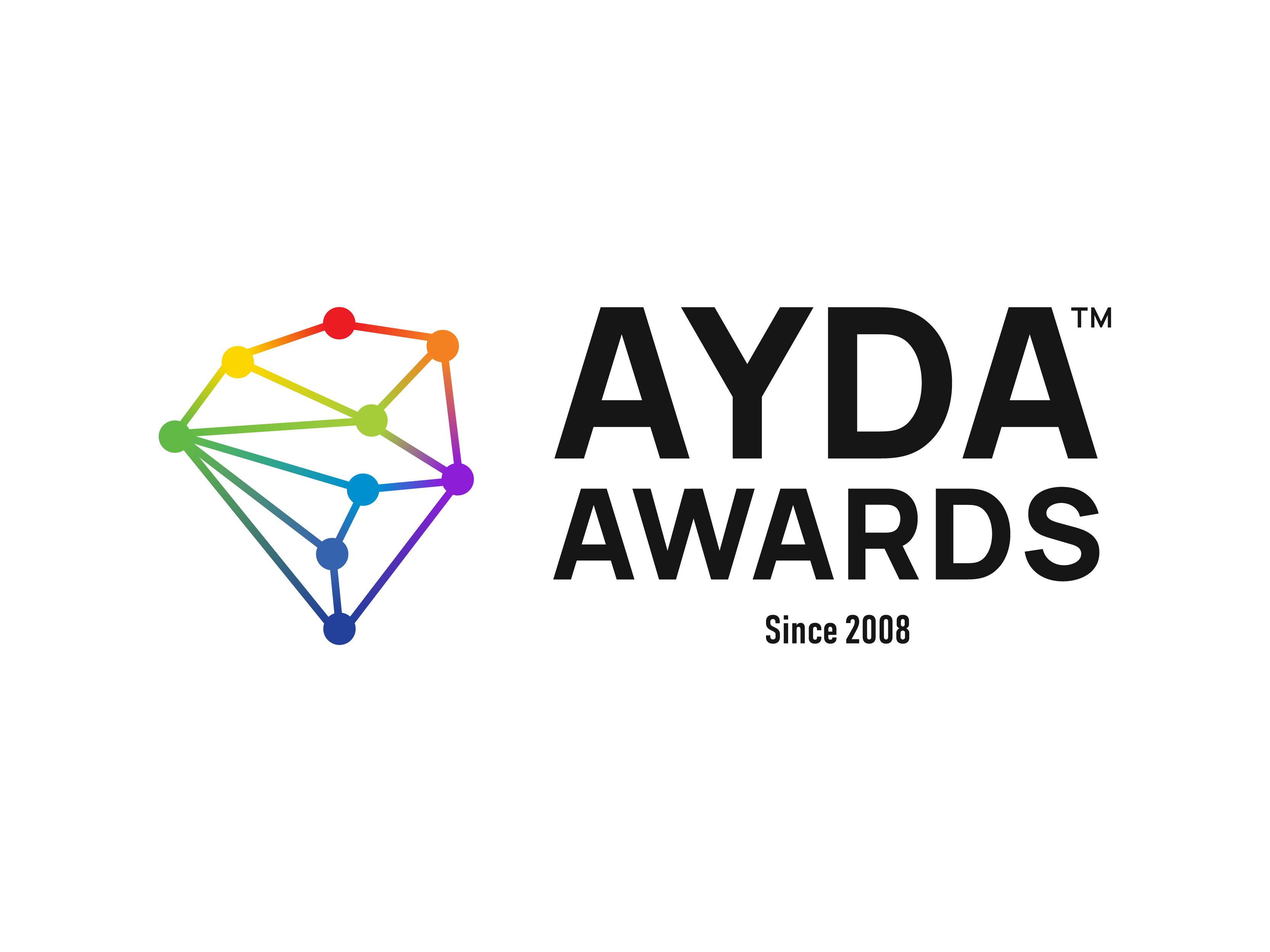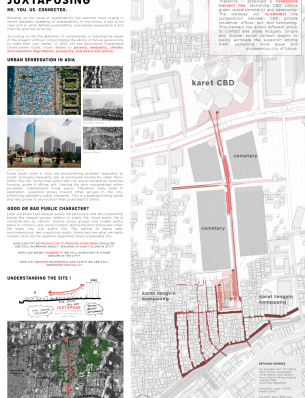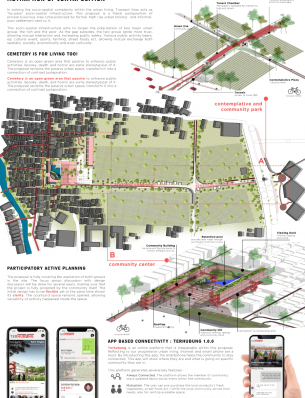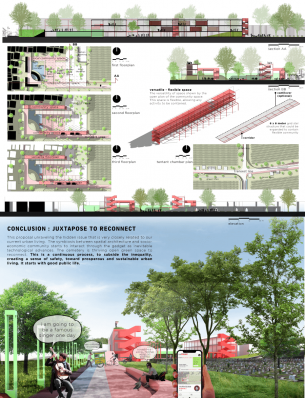Project Description
Design Statement
Juxtaposing: me. you. us. connected
Bringing up the issue of sustainability has become more urging in recent decades. Speaking of sustainability in the future, it has to be clear at first, what defines sustainability, how design responds to it and how the goal has to be set.
According to the United Nation, the definition of sustainability is meeting the needs of the present without compromising the ability of future generations to meet their own needs. In 2015, the UN has announced Sustainable Development Goals, those related to poverty, inequality, climate, environmental degradation, prosperity, and peace and justice.
Urban Segregation in Asia
Some large cities in Asia are encountering problems regarding social- economy inequality; per se portrayed visually by urban fabric within the city. Some areas within the city are privatized as luxurious housing, grade A offices, ect. Leaving the poor marginalized within pocketed- substandard living space. Therefore, they lived in seperation. suspicion grows toward other groups in the city, enhancing unhealthy public character. This is a sedated ticking bomb and very prone to provocation that could lead to chaos.
Public Character Indicates Sustainable Future
Later we know that unequal public infrastructure and land ownership brings the unequal groups relation in public life. Good public life is characterized by vibrant, diverse social groups and livable public place. On the contrary, less social contact, stultifying and caring less urban life leads into sick public life. The feeling of being safe, non-pretentious, less suspicious public characters are what we really missed. Here are the question regarding future sustainable city.
HOW CAN CITY BE PRODUCTIVE TO PROVIDE THEIR NEEDS WHILE WE ARE STILL WORRYING ABOUT WALKING AT NIGHT ALONE
IN CITY?
HOW CAN WE BE TOLERANTIF WE STILL SUSPICION TO
OTHER GROUPS IN THE CITY?
HOW CITYBECOME PROSPEROUS AND FAIRIF WE ARE STILL
SEPARATED SPATIALLY?
Proposal
Therefore, I proposed a connective transect line, sectioning CBD, passive green space(cemetery) and kampoong. The walkway will reconnect the juxtaposition between CBD private residence, offices, ect; and kampoong. This transect line allows different groups to contact and share mutually. Simple and mutual social contact begins to slowly eliminate the suspicion among them, sustaining more equal and prosperous city of the future.
Metaphor of Juxtaposition
In solving the socio-spatial complexity within the urban living, Transect lines acts as “by-pass” socio-spatial infrastructure. This proposal is a literal juxtaposition of private-luxurious area (characterized by formal, high rise urban blocks) and informal- poor settlement next to it.
This socio-spatial infrastructure aims to loosen the polarization of two major urban group; the rich and the poor. As the gap subsides, the two group ignite more trust, allowing mutual interaction and increasing public safety. Various public activity bears, eg: cultural event, sports, farming, street foods ect, allowing mutual exchange both spatially, socially, economically and even culturally.
Participatory Planning
The proposal is fully covering the aspiration of both groups in the site. The focus group discussion with design discussion will be done for several years, making sure that the project is fully accepted by the community itself. The initial design has to be flexible yet at the same time shown its clarity. The courtyard space remains opened, allowing versatility of activity happened inside the space.
App Based Connectivity
Terhubung is an online platform that is inseparable within this proposal. Reflecting to our progressive urban living, internet and smartphone are a must. By introducing this app, the smartphone helps the community to stay connected. This app will show where they are and what is going on specific community they are in.
Color Scheme
Color matters. Pale color creates a dull, unsupervised public space. On the contrary, vibrant color ignites better ambience. Nippon paint has thousand of colorful palette to be brought to the project. Lustrous red and pink will give softer and caring ambience within a segregated city life. The color pink represents caring, compassion and love. The pink color stands for unconditional love and understanding, and is associated with giving and receiving care. Pink is a combination of red and white, both colors add a little to its characteristics.
This color will help improve the stereotype of cemetery that is spooky and horror into more livable, humane space. The color of the lines can be changed according to the events.
Conclusion
This proposal unraveling the hidden issue that is very closely related to our current urban living. The symbiosis between spatial architecture and socio- economic community starts to interact through the gadget as inevitable technological advances. The cemetery is thriving open green space to reconnect. This is a continuous process, to subside the inequality, creating a sense of safety, toward prosperous and sustainable urban living. It starts with good public life.
Lowly, unpurposeful, and random as they appear, sidewalk contacts are the small change from which a city’s wealth of public life must grow.
-Jane Jacob














